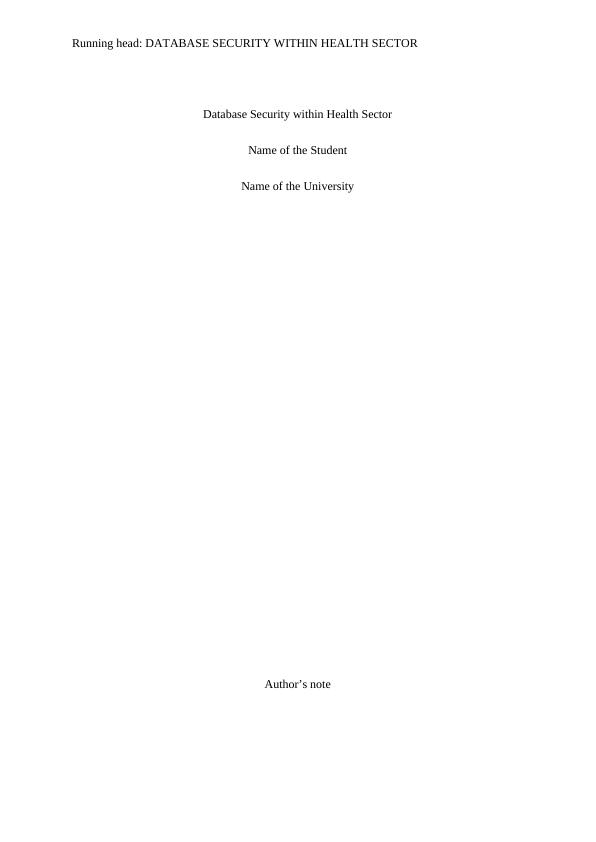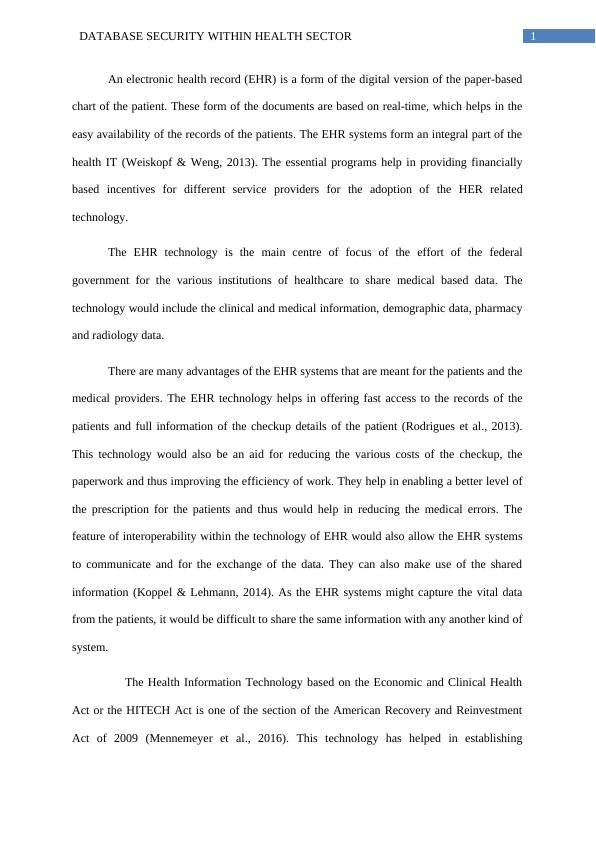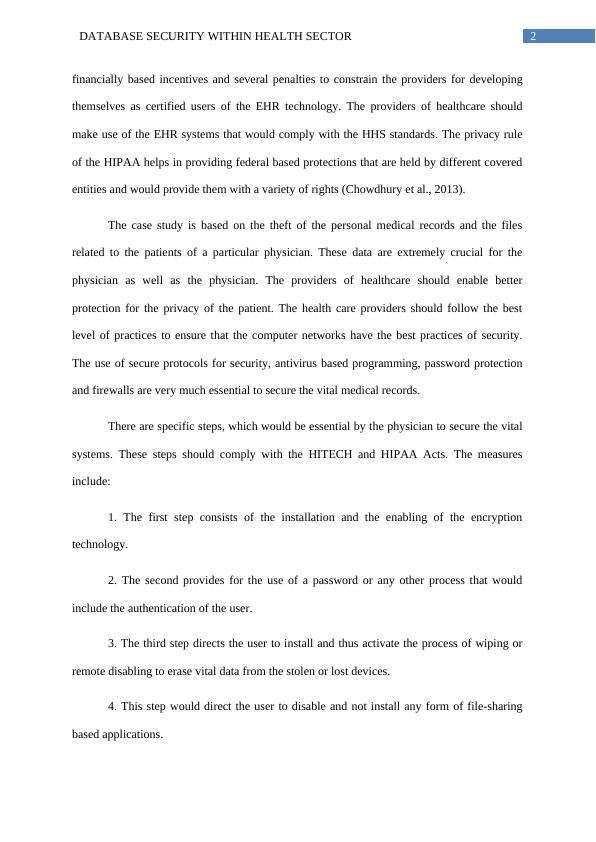Database Security within Health Sector
Discuss the steps a physician needs to take to be compliant with HIPAA and HITECH after a car break-in and theft of a work computer containing patient files and medical records.
6 Pages1286 Words347 Views
Added on 2023-06-10
About This Document
This article discusses the importance of database security within the health sector, including the use of electronic health records (EHRs) and measures that healthcare providers can take to protect patient data.
Database Security within Health Sector
Discuss the steps a physician needs to take to be compliant with HIPAA and HITECH after a car break-in and theft of a work computer containing patient files and medical records.
Added on 2023-06-10
ShareRelated Documents
End of preview
Want to access all the pages? Upload your documents or become a member.
HIPAA and HITECH Compliant Steps
|6
|1189
|468
Electronic Health Records Presentation 2022
|14
|900
|21
Security of Healthcare System: Components, Best Practices, and Limitations
|14
|3916
|166
Report on Introduction to EHR
|14
|1221
|15
Development of HealthCare with Information Technology.
|5
|912
|15
NIH information BTRIS Agrees that healthcare data security used to develop a clinical database design
|6
|557
|490



